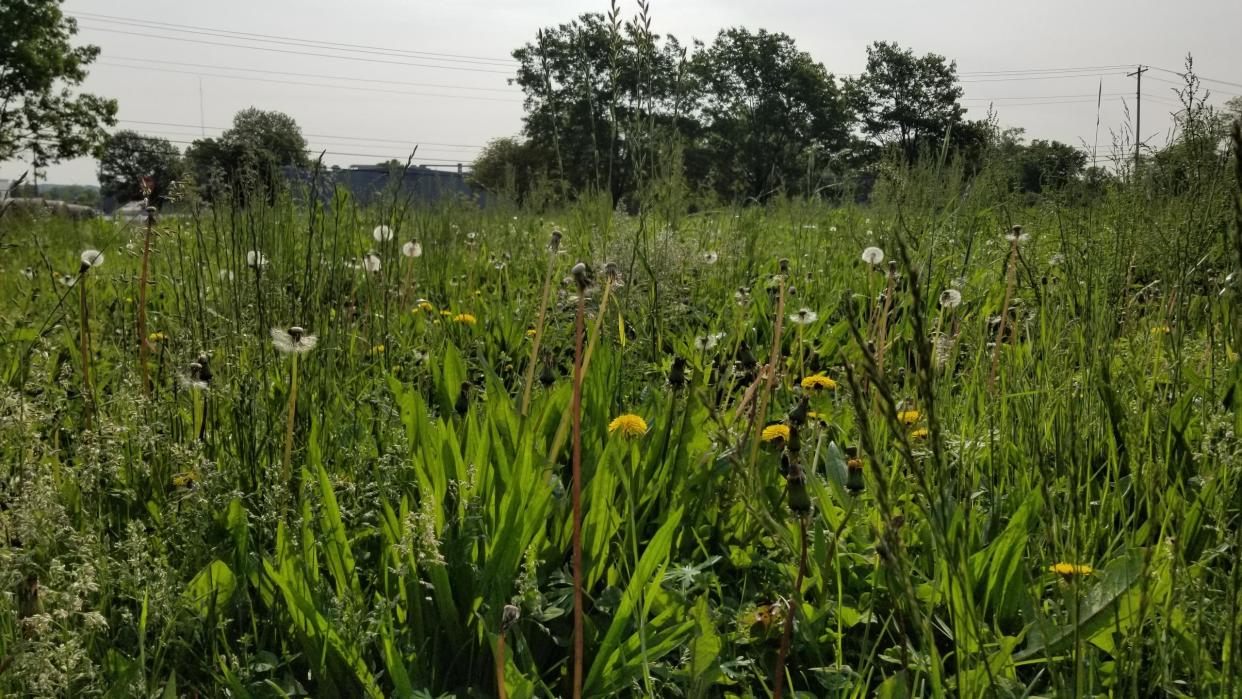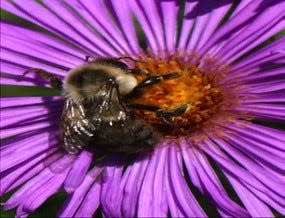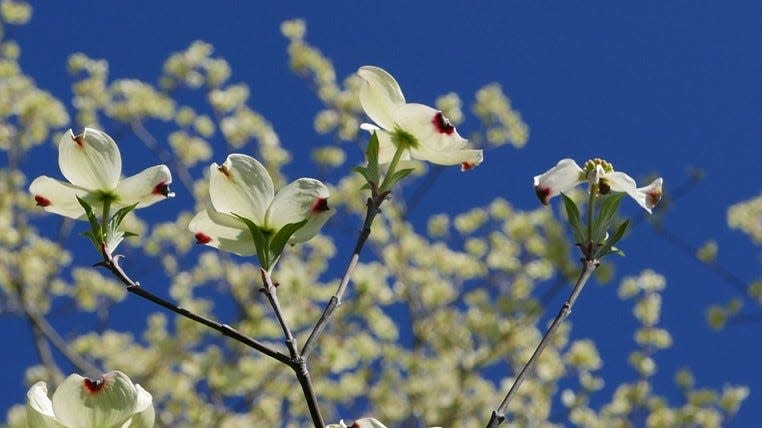Here's how to attract bees, butterflies with a pollinator garden

Now that the calendar is turning from May to June, proponents of the “no-mow May” movement can begin to mow their lawns once again. If you are not familiar with this movement, it suggests that homeowners park their lawn mower for the month of May and let their grass, and the resulting weeds such as dandelions, to grow uninterrupted.
By refraining from mowing, the resulting weeds provide a food source and habitat for bees and other beneficial insects at a time of the year when there are few other food sources for these insects.
The idea for no-mow May started in Great Britain a couple of years ago and has gained some traction in the United States. This year, some communities in Ohio have adopted the practice for their municipal greenspaces and have also promoted the practice among residents and landowners in those communities. While the objective of the no-mow May strategy is laudable — who doesn’t love bees and other pollinators? — the strategy presents some serious challenges come June.

Effects of not mowing
Not mowing for the whole month of May means that the lawn is now 12-18 inches tall, depending on species and climatic conditions. If the lawn is now mowed down to a recommended height of 3 inches on the first of June, the lawn may go into shock, the crown will be exposed and as we get into the drier months of summer, the grass plants may suffer and even die. Reseeding might be necessary in September to bring back the turf which will cost time, money and effort.
Dead grass plants will result in open ground space, which will allow a greater number of germinating weeds to flourish, making it more difficult to establish a new stand of grass without the use of an herbicide.
'Leaves of three, let it be': Now is the time to weed out poison ivy in your landscape. Here's how
At the first mowing in June, no-mow May practitioners may find that in addition to providing habitat for pollinators, the tall grass may be serving as a habitat for mice, voles, snakes, and even a nest of baby bunnies. Harmful insects such as ticks may also have taken up residence in the tall grass during the month of May.
Pollinators and other beneficial insects which have taken up residence in the grass and weeds may also be killed when the grass is cut for the first time in June.
Alternatives to attract pollinators
Instead of sacrificing a healthy stand of grass to provide just 30 days of food and habitat for pollinators and other beneficial insects, consider creating a pollinator garden which will provide a food source and habitat for pollinators throughout the entire growing season. Consider devoting a portion of the yard to create a pollinator garden where you can grow an abundance of different flower shapes, sizes, and colors which will appeal to a variety of pollinators. Grouping plants together in sunny locations helps pollinators find and feed on desirable flowers while expending less energy in the search for plants.
Different species of bees, butterflies and other pollinators are active in central Ohio at different times of the year. Queen bumblebees, mourning cloak butterflies and blue orchard bees are active in early spring. Monarch butterflies, worker bumblebees and worker honeybees forage from spring into the cooler days of autumn.

Gardeners can help pollinators by planting flowers with a sequence of bloom throughout the growing season, from early spring through late fall. Late-season perennials like asters and goldenrod provide important food at especially critical times.
Flowering trees in the landscape also provide pollen which will serve as an early season food source for pollinators in April and May, so consider planting crabapple, redbud, magnolia, buckeye, willow, and even silver and red maple if your landscape does not already include these trees. Consider planting additional species of trees which flower in summer, such as linden and black locust in order to provide a food source throughout the season.
Even without implementing a no-mow May strategy, your lawn can provide as food source for pollinators if you diversify the stand by overseeding clover and allowing violets to creep into the stand. Both of these weeds will provide a better source of food for pollinators than dandelions.
Wait out wet weather: Vegetable gardeners, beware of working in wet soil
Provide nesting sites
Brush piles, dead standing trees and clumping grasses all provide important nesting and overwintering habitat for bees and butterflies. Cavity-nesting bees make their nests in the pith of twigs like elderberry or sumac, or in abandoned beetle burrows in dead trees. Solitary ground-nesting bees usually nest in sandy, well-drained soils on south-facing slopes.

Artificial nesting sites can be made or purchased to encourage cavity-nesting bees. These structures require routine maintenance, and even periodic replacement, to prevent the build-up of bee pathogens and parasites.
Bumblebees prefer to nest in pre-existing cavities with some form of insulation such as old rodent nests or bird nests, both above and below ground. They will also nest under clumps of grass. Purchased or constructed bumblebee nesting structures are generally considered unsuccessful at attracting bumblebee queens.
Additional needs of pollinators
A water source in the garden helps thirsty pollinators, especially in the heat of summer. A shallow bowl or birdbath can provide sufficient water. A few sticks placed in the bowl will provide a place for bees and other insects to land and perch, thus preventing insect drowning.
Limit pesticide use in the garden. Pesticides can have negative effects on bees and other insects, killing them outright or affecting behavior, longevity or susceptibility to disease. Use an integrated pest management approach with multiple biological and cultural strategies to reduce damage to beneficial insects.
And finally, pollinators need pathways to additional habitat and food sources beyond your backyard, so talk your neighbors and other landowners in your community into planting pollinator habitats on their property.
For lists of plants that attract and support pollinators, go to go.osu.edu/plantsforpollinators.
Mike Hogan is an Extension educator, Agriculture and Natural Resources, and associate professor with Ohio State University Extension. hogan.1@osu.edu
This article originally appeared on The Columbus Dispatch: Plant pollinator garden to provide food, habitat for bees, butterflies

